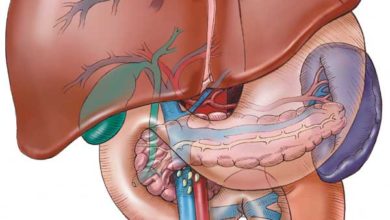Apple Founder Steve Jobs’ Pancreatic Cancer

In October 2011, Apple founder Steve Jobs died at age 56 after a seven-year battle with pancreatic cancer, and as a result, patients are asking me about this disease. Jobs announced he had pancreatic cancer in 2004, battled the disease for years, and resigned as CEO of Apple in August 2011. Actor Patrick Swayze died from pancreatic cancer in September 2009. While pancreatic cancer is not one of the most common forms of cancer, it can be considered one of the most deadly because it is aggressive, spreads rapidly and thus often not diagnosed until it is in later stages, and few treatment options exist.
The most common type of pancreatic cancer arises from the exocrine glands and is called adenocarcinoma of the pancreas. The endocrine glands of the pancreas can give rise to a completely different type of cancer, referred to as pancreatic neuroendocrine carcinoma or islet cell tumor.
About 95% of exocrine pancreatic cancers are adenocarcinomas. While the pancreatic endocrine tumors, which make up about 1% of total cases. the remaining 5% include: acinar cell carcinomas, adenosquamous carcinomas, and undifferentiated carcinomas with osteoclast-like giant cells.This article only discusses issues related to the more common type of pancreatic adenocarcinoma.

Pancreatic Cancer Causes
The main recognized risk factors for pancreatic cancer include the following:
•Smoking
•Advanced age
•Male sex – The male-to-female ratio of pancreatic cancer is 1.3:1.
•Chronic pancreatitis – Inflammation of the pancreas, usually from excessive alcohol intake or gallstones
•Diabetes mellitus
•Family history of pancreatic cancer
Pancreatic Cancer Symptoms and Signs
The main symptoms of pancreatic cancer include the following:
•Pain in the abdomen, the back, or both
•Weight loss, often associated with the following:
◦Loss of appetite (anorexia)
◦Bloating
◦Diarrhea or fatty bowel movements that float in water (steatorrhea)
◦Rarely may present with new diabetes in a person with weight loss and nausea
•Jaundice (yellowing of the skin)
The symptoms of pancreatic cancer are generally vague and can easily be attributed to other less serious and more common conditions. This lack of specific symptoms explains the high number of people who have a more advanced stage of disease when pancreatic cancer is discovered.
Pancreatic Cancer Diagnosis
•Abdominal ultrasound
•Abdominal computed tomography (CT)
•Percutaneous biopsy
•Endoscopic biopsy
In addition, a blood test called CA 19-9 is obtained. CA 19-9 is often produced by pancreatic cancers, and its level is elevated in 80% of pancreatic cancer cases. Checking the CA 19-9 levels can be a useful gauge of how the treatment is working. After treatment, the doctor may check the CA 19-9 levels regularly as one indicator of whether the cancer has returned. However, CA 19-9 is not an absolute test for pancreatic cancers, and other conditions may cause a rise in the CA 19-9 levels. Likewise, a normal CA 19-9 level is not a guarantee that the cancer has not returned.
Pancreatic Cancer Treatment
The optimal treatment of pancreatic adenocarcinoma depends on the extent of the disease. The extent of cancer can be divided into the following 3 categories:
•Localized: The cancer is completely confined within the pancreas.
•Locally advanced: The cancer has extended from the pancreas to involve nearby blood vessels or organs.
•Metastatic: The cancer has spread outside the pancreas to other parts of the body.
Done by Nora al-Qe’an



